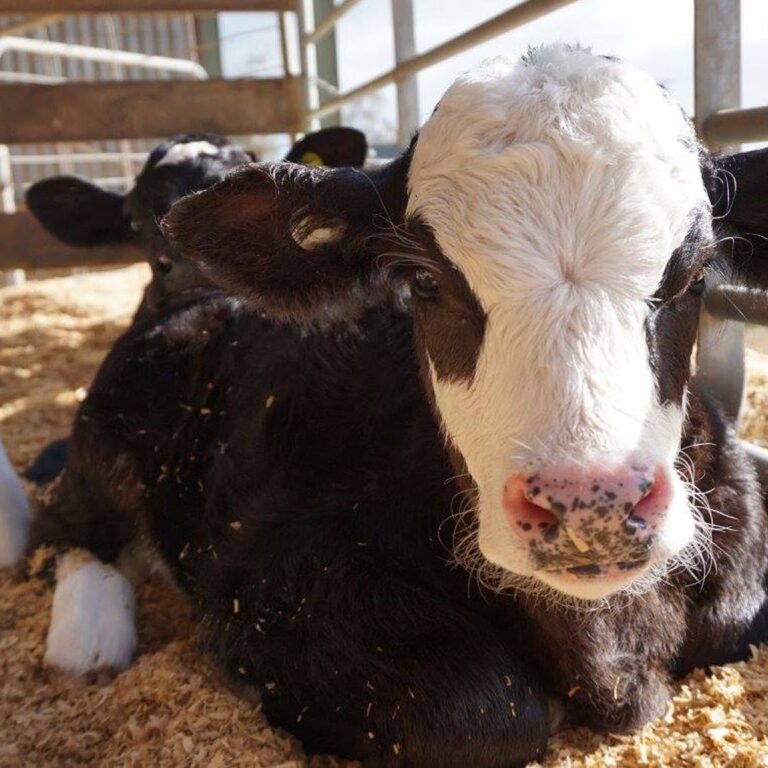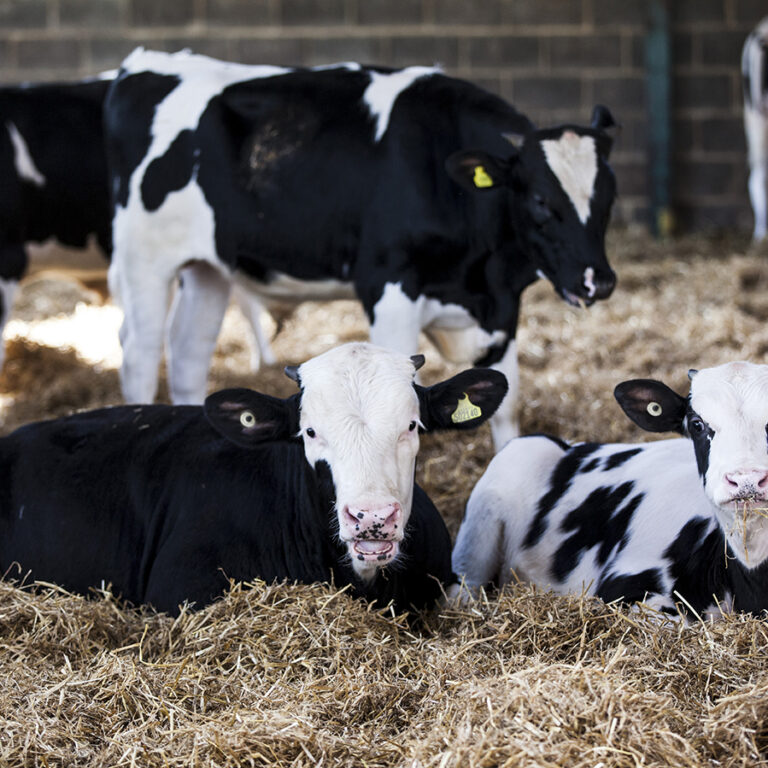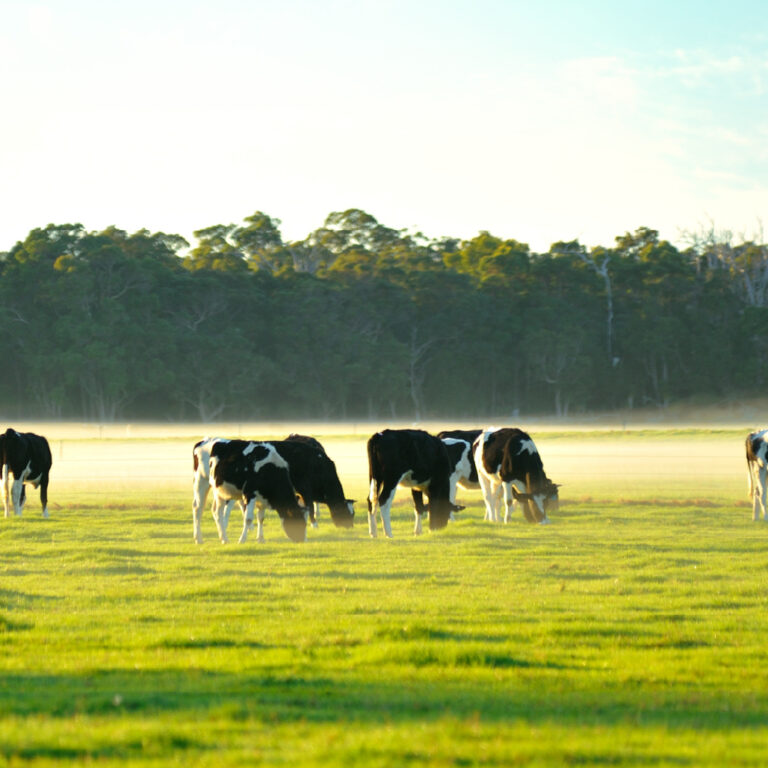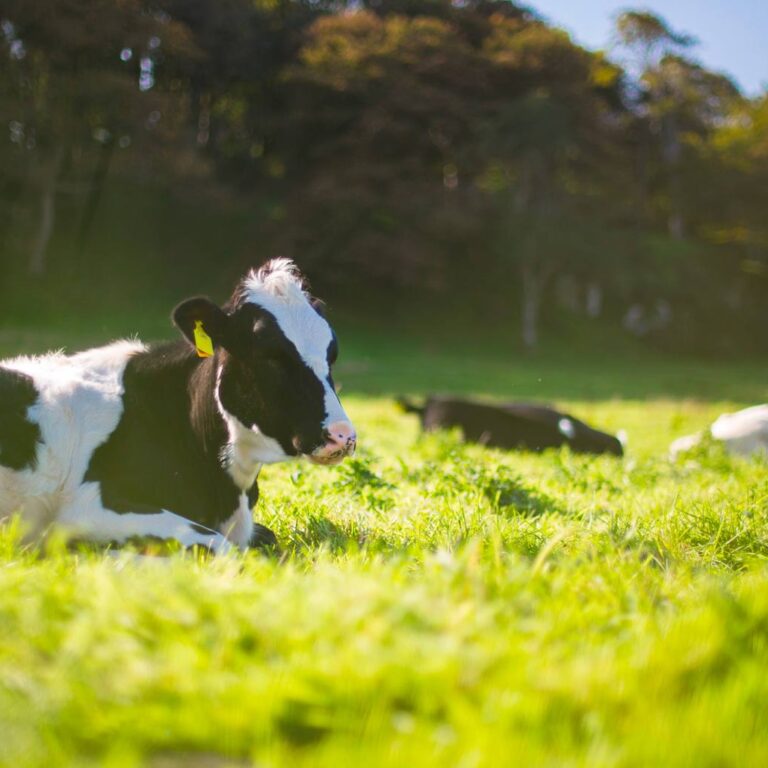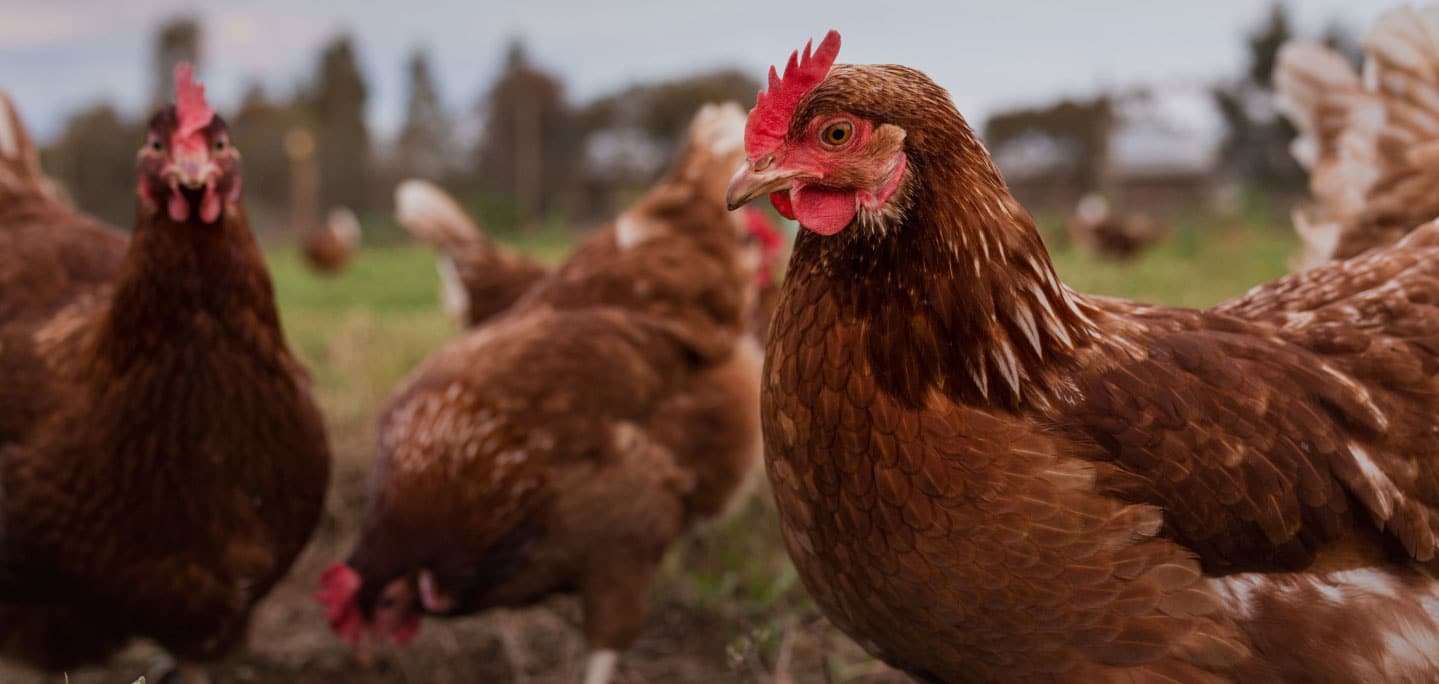In Australia, there are 1.6 million dairy cows and each one will have a calf every year in order to keep producing milk. Unlike in beef production, where calves stay with their mothers until weaning, in the dairy industry, cows and calves are separated very early on. We know Australians care about farm animals and are interested in the welfare of dairy animals, so we’d like to share with you what the RSPCA believes a dairy calf needs to have a better quality of life. And importantly, what you can do to support a higher welfare dairy product.
Female calves will often be raised to become part of the milking herd, while male calves who don’t produce milk, are seen as surplus to farm requirements – they are effectively a by-product of dairy farming. A relatively small number of these calves are raised for veal or beef, however, every year around 450,000 calves (known as bobby calves) will go to slaughter at around 5 days old. Products from these animals include hides for leather, calf rennet for cheese making, and by-products for the pharmaceutical industry.
Regardless of how calves are used, it’s important they’re cared for in a way that meets their needs, with special consideration of their vulnerability due to being so young.
Why are dairy calves not kept with their mothers?
Generally on a dairy farm, cows and their calves are separated within the first 24 hours. This is done to reduce the risk of disease spread and allows the farmer to ensure the calf is getting enough colostrum (first milk).
Some small-scale dairy farms in Australia and countries like the UK are trialing keeping calves with their mothers longer. Research is also looking at how dairy farmers can increase contact between cows and calves while avoiding distress at separation.
5 things calves need to be happy and healthy
1. A solid nutritional start
To give calves the best nutritional start, they need to be given enough high quality colostrum, soon after birth. Colostrum is the first milk produced by cows after they birth their calf and it contains antibodies that calves need. Afterwards, it’s important for calves to continue to receive enough milk, fed to them in feeders with teats so they can suckle, as they would on their mother’s udder. Suckling is a natural behaviour for calves and it’s important they are able to drink through a teat rather than from a bucket.
2. A comfortable place to rest
In the first few days or weeks, some farmers house calves individually in pens (to reduce the risk of disease transmission), whilst others keep calves in groups, indoors. Group housing of young calves is preferable, because it gives them more space and more opportunity to play and socialise, and avoids calves developing abnormal behaviours.
In all housing systems, it’s very important that calves have access to a clean, dry and comfortable environment. Did you know calves spend up to 18 hours a day lying down? Calves aren’t able to regulate their temperature as well as older cattle, so they need plenty of protection from the elements and suitable bedding like straw to snuggle up in during the day and night.
3. Keeping healthy
Disease is a major cause of poor welfare in dairy calves, so it’s essential for farmers to undertake various steps to minimise the risk of disease outbreak. Through good management, vaccinations, rapid detection and treatment, diseases can be kept at bay. Calves that are well fed, managed properly, and not stressed are likely to have a stronger immune system.
4. The importance of play
Anyone who’s worked with calves will be able to tell you how much they like to play. Calves are highly social and enjoy interacting with one another. When housed in groups calves run, jump and buck – which are all important play behaviours, leading them to feel positive emotions.
5. Better overall wellbeing
For humans, we know that eating well, getting enough exercise, feeling safe and secure all help improve our mental state, and this is the same for calves. When calves have their nutritional, environmental, health and behavioural needs met as well as allowing them to express behaviours that they find rewarding, it has a positive effect on their overall welfare.
What can dairy consumers do to encourage a focus on better welfare?
It’s pretty simple.
Contact the maker of your favourite dairy product or veal brand that you spot in the supermarket or when eating out and ask them about animal welfare on their farms.
You can also get in touch with your supermarket and let them know the welfare of dairy cows and calves is important to you and that you would be interested in higher welfare dairy and veal products.
Here are some questions to ask brands:
– How are calves cared for on farm? Are their nutritional, environmental, health, behavioural and general wellbeing needs met?
– Is the farmer allowing more cow-calf contact and avoiding separation distress?
– Is the farmer finding ways to grow bobby calves out for veal or beef?
– Do you source milk from farmers who don’t tail dock their cows?
– Do you source milk from farmers who don’t induce calving?
– Do you source milk from farmers who use pain management when disbudding calves?
– Do you source milk from farmers who have a lameness and mastitis reduction strategy in place?
– Do you source milk from farmers who don’t export breeding cows?
Want more?
Read these great posts Looking to make a better choice with dairy? and The deal with veal
or listen to our podcast episode ‘The deal with veal, and how we can improve bobby calf welfare’

